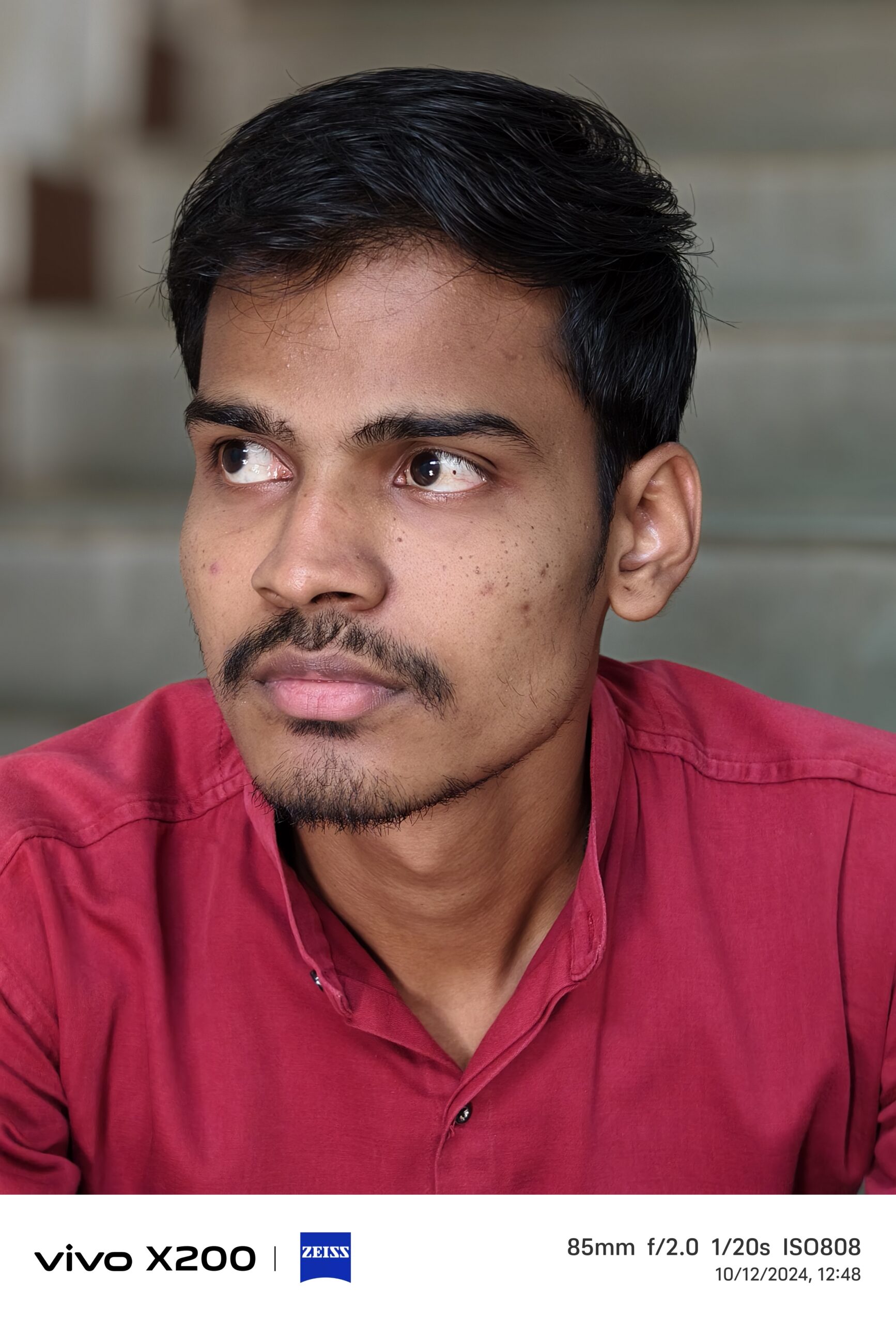The semi-premium camera phone segment is a highly competitive space, with manufacturers continuously pushing the boundaries of innovation. Over the years, these devices have become more feature-packed – and more expensive. Both the OnePlus 13 and Vivo X200 come with a triple-camera setup, making the camera system a key factor in their appeal. Today, I’ll find out which of these two delivers the better camera performance.
Camera Setup
OnePlus 13 Camera Setup:

- 50 MP triple-camera system, co-developed with Hasselblad
- Main Camera: Sony LYT-808 (same as Oppo X8 Pro), features ALC coating
- Ultrawide Camera: Samsung JN5
- Telephoto Camera: Sony LYT-600
- Front Camera: 32 MP Sony IMX615, doubles as an island
- Processor: Snapdragon 8 Elite
Vivo X200 Camera Setup:
- 50 MP triple-camera system with Vario-Tessar branding
- Main Camera: Sony IMX921 sensor
- Ultrawide Camera: Samsung JN1 sensor
- Telephoto Camera: Sony IMX882 (3x optical zoom | 100x digital zoom | 15cm macro)
- Front Camera: 32 MP ƒ/2 (Ultra Wide)
- Processor: MediaTek Dimensity 9400
Since my initial review in the January 2025 issue, both phones have received multiple software updates. If you want to check out that review, you can visit our website.
Daylight Performance
Main Camera
Both phones feature a 50 MP sensor, but the OnePlus 13 outputs images at 14.6 MP, while the Vivo X200 outputs at 14.3 MP. The OnePlus uses the Sony LYT-808 sensor, whereas the Vivo houses the IMX921 sensor.
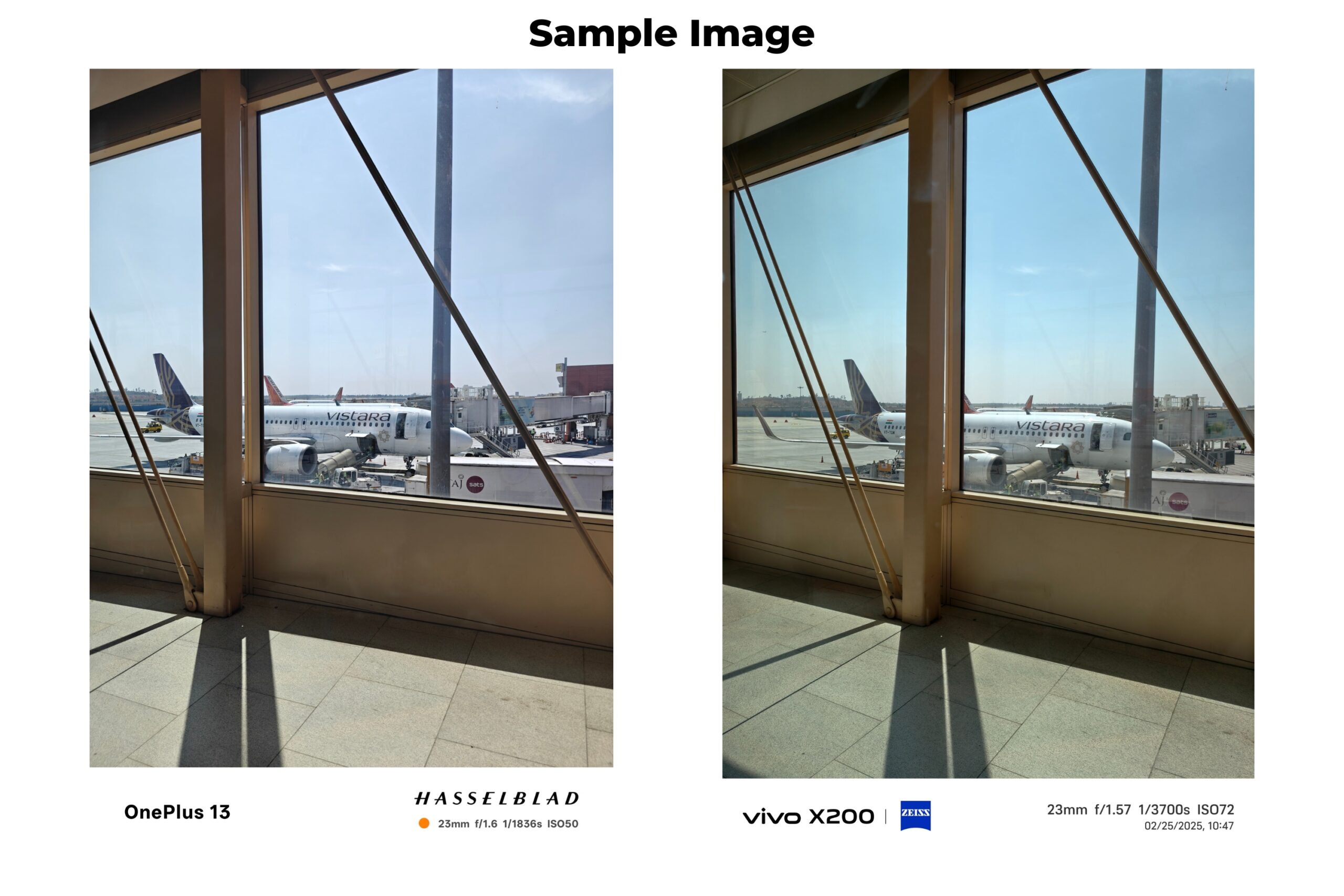
In terms of image quality, both phones produce noticeable differences. The OnePlus 13 tends to have a slight reddish tint, whereas the Vivo X200’s images appear slightly underexposed. However, the OnePlus excels in sharpness and zoom performance, producing crisp details even in shadows and highlights. Both cameras deliver well-saturated images with a good tonal range, but at times, OnePlus photos can look slightly flat and neutral.
When shooting against the light, the OnePlus 13 handles lens flares much better, which I confirmed through multiple tests.
Ultra-Wide Camera
Both phones feature a 50 MP ultra-wide sensor, but with different Samsung sensors—JN5 on the OnePlus 13 and JN1 on the Vivo X200. The OnePlus outputs at 14.6 MP, while the Vivo delivers 14.28 MP.
Like the main cameras, both ultra-wide sensors produce natural and neutral colours. However, the Vivo’s images tend to have higher contrast, making them appear slightly processed or “cooked” in some cases. This processing also affects shadow and highlight details.
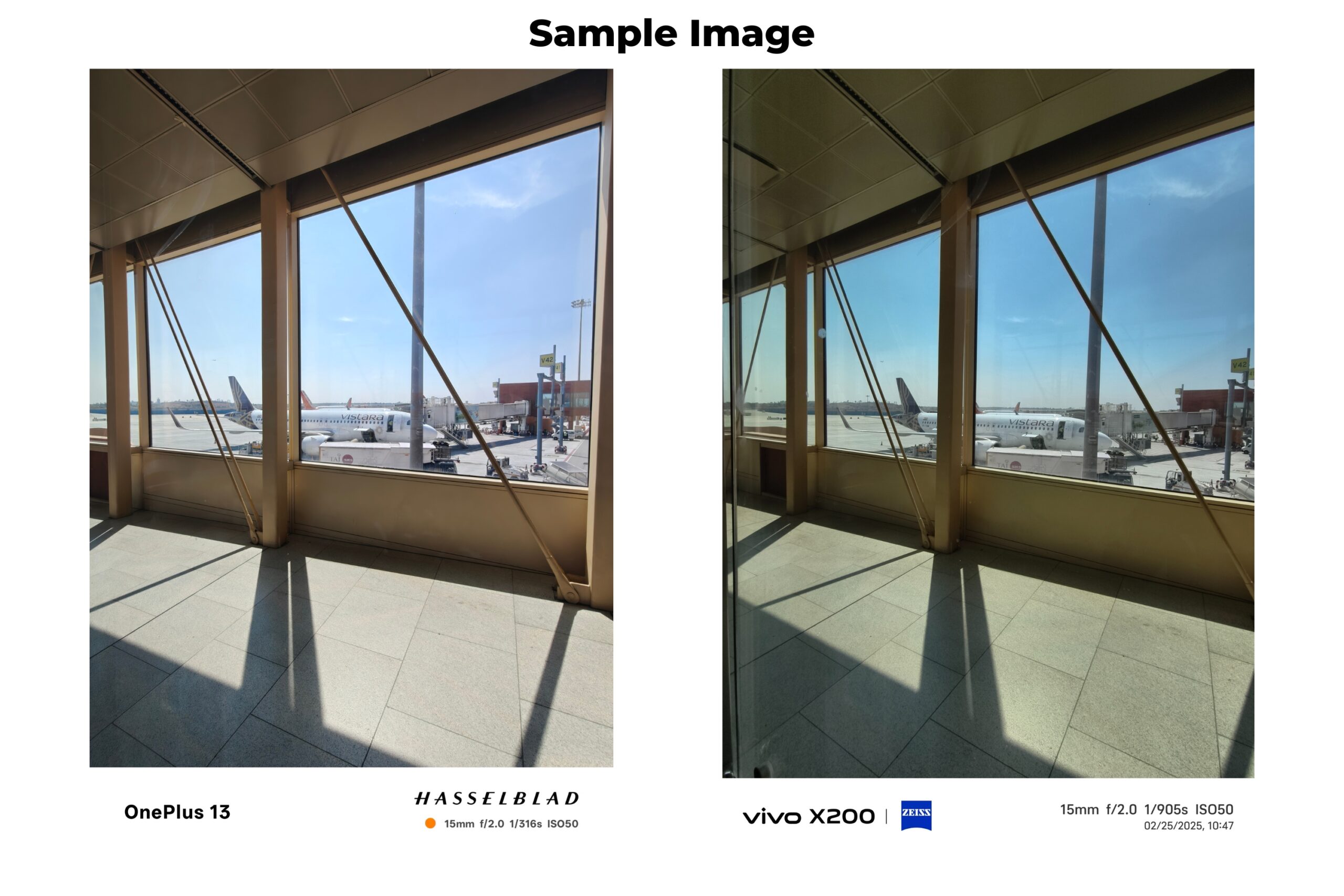
Overall, both cameras perform well, though the OnePlus still exhibits a slight reddish tint in some images. Sharpness on zooming in is again better on the OnePlus, while distortion control is good on both.
Telephoto Camera
The OnePlus 13 uses a Triprism lens, while the Vivo X200 opts for a periscope lens. Both feature a 50 MP sensor with 3x optical zoom, but Vivo has downgraded its telephoto sensor from 64 MP in the X100 to 50 MP in the X200. The OnePlus features the Sony LYT-600, while the Vivo has the Sony IMX882 and they both offer different zoom ranges as well. The OnePlus can zoom up to 120x, while the Vivo maxes out at 100x.
Here, Vivo produces slightly underexposed images but delivers better sharpness at higher zoom levels. Colour consistency is also more reliable on the Vivo, though OnePlus has improved in this area compared to its previous models.
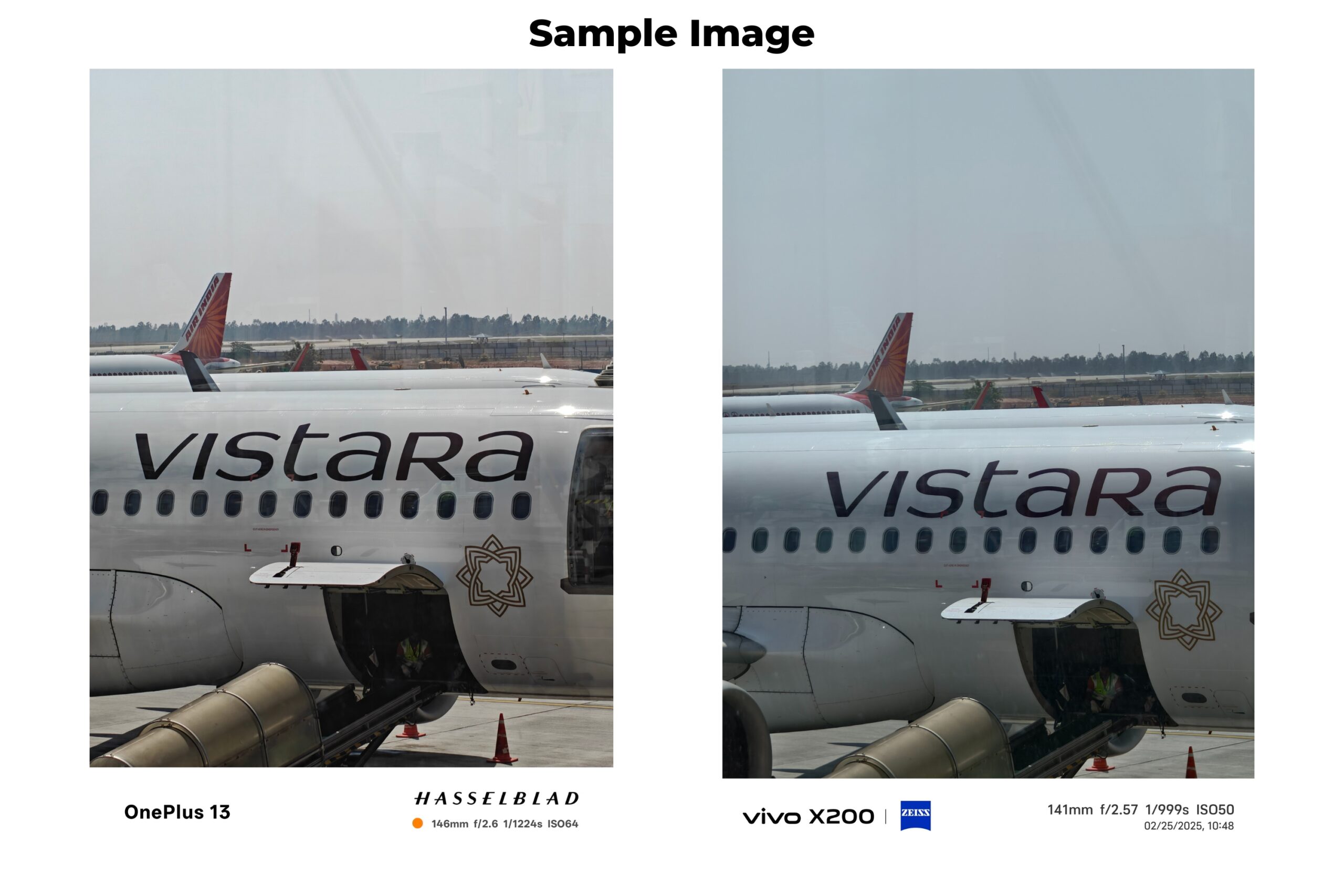
A great example of this is the Vistara logo test—on the OnePlus, the logo appears slightly blackish instead of its original maroon colour, whereas Vivo reproduces the colour more accurately. However, at maximum focal range, both phones produce over-processed images, making extreme zoom largely impractical.
Low-Light Performance
Both phones have impressive low-light capabilities, as noted in my previous reviews.
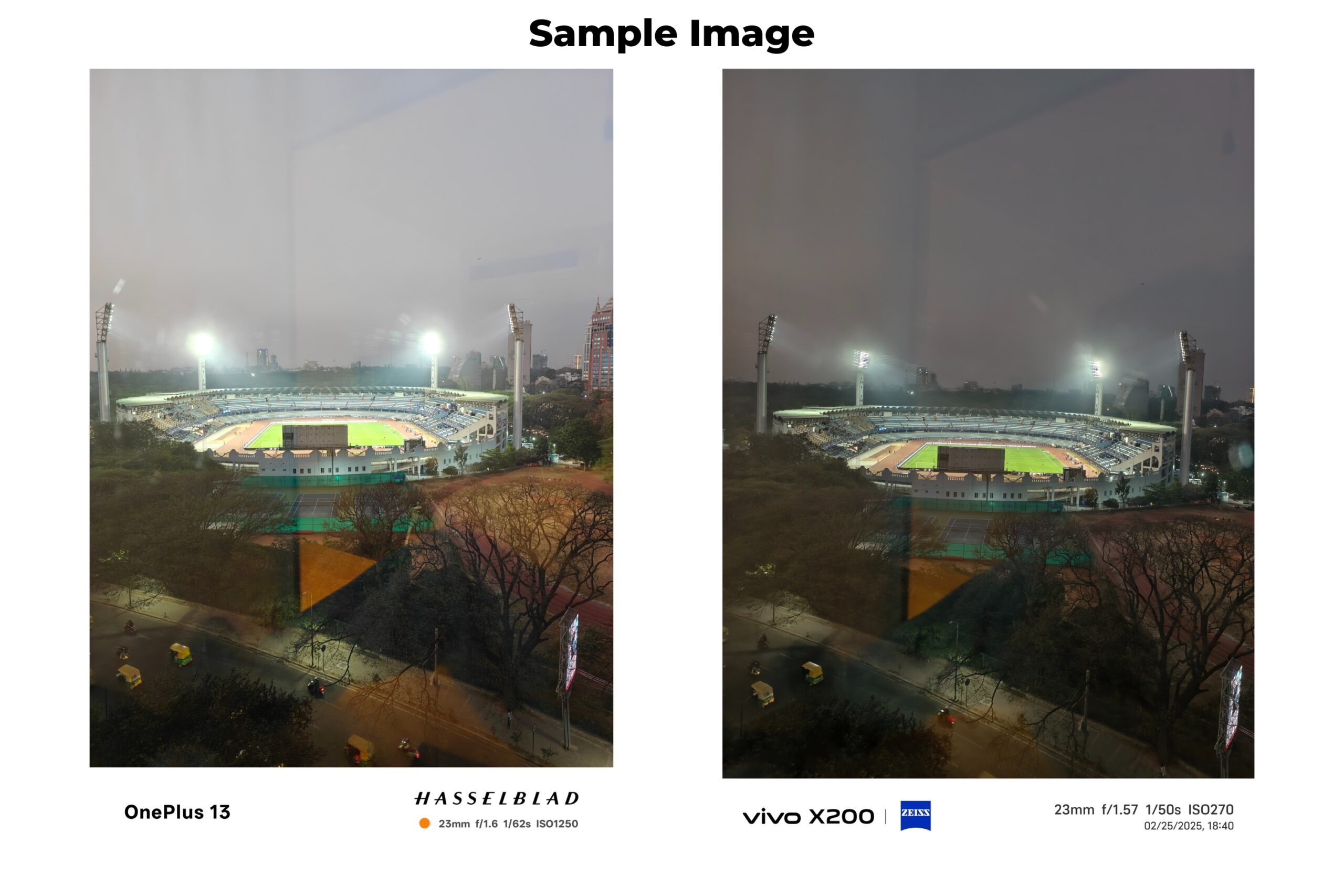
Main Camera: Both deliver sharp, well-saturated images. Vivo’s high contrast makes images look more vibrant and pleasing to the eye, but OnePlus still retains better sharpness when zooming in.
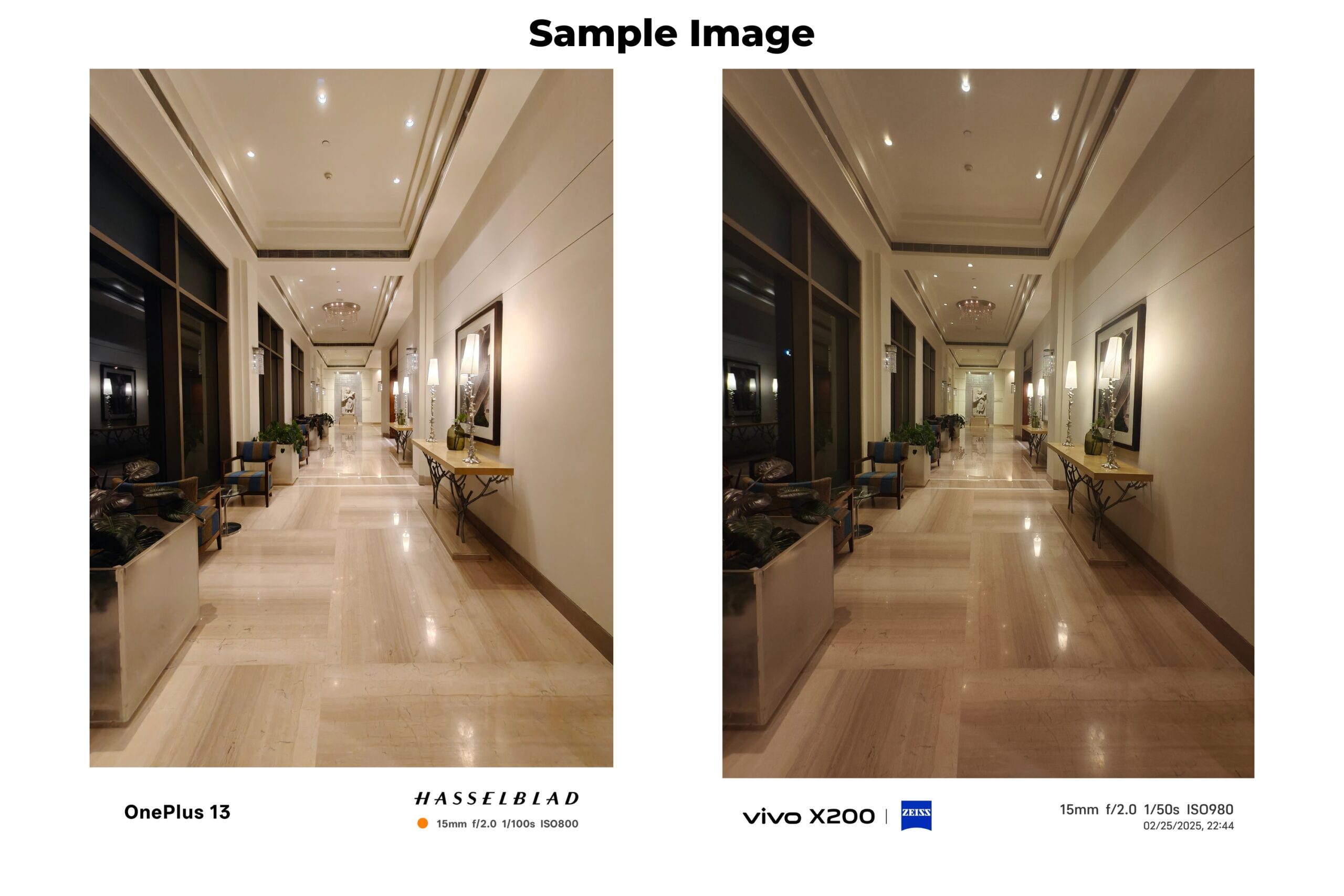
Ultra-Wide Camera: OnePlus images exhibit a slight reddish tint, but its distortion control is better than Vivo’s.
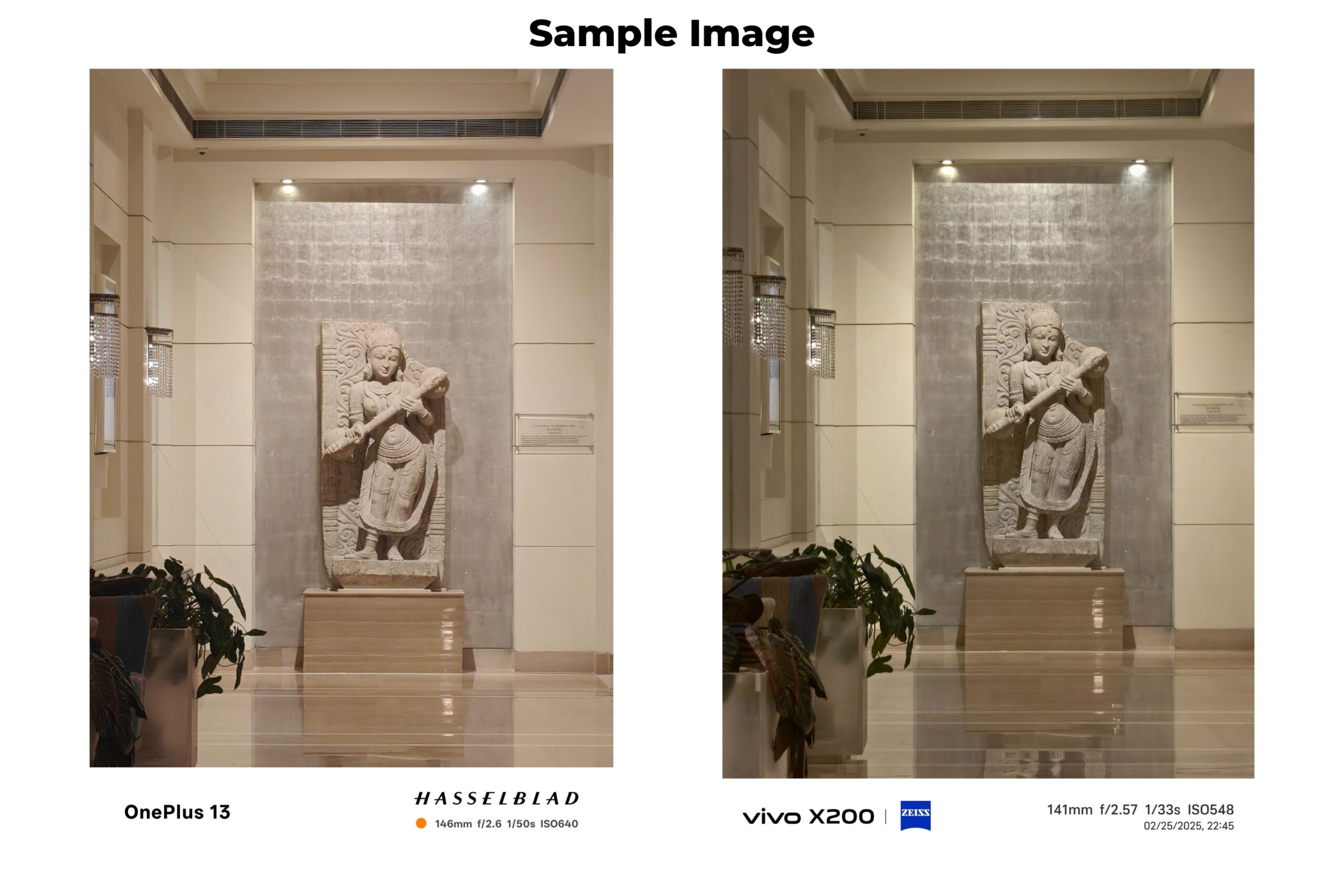
Telephoto Camera: The Vivo once again shines at higher zoom levels, maintaining sharpness and consistency, while OnePlus struggles with colour accuracy.
Front Camera
They both use a 32-MP camera at the front which also shoots 4k upto 60 fps. The images from both are sharp and decent, but the OP has a better performance overall. In terms of video as well – there is a slight cool tone to the output from the Vivo, while the OP delivers more natural result. The sound recording and output also is better in the OP.

Portraits
In portraits both the phones offer 5 focal ranges to shoot at, but the Vivo goes upto 100x whereas the OP will go to a max of 85mm.

In terms of performance both are pretty good. The output is sharp and detailed in both cases and the colour accuracy is also good. The images are vibrant and well saturated. The edge detection performance is also decent in both cases. But there is visible skin smoothening in the Vivo despite the setting being off. At higher focal range there is a slight reddish and yellowish tinge in both the cameras as well. But what I liked is that the images are sharper as you move to higher zoom.
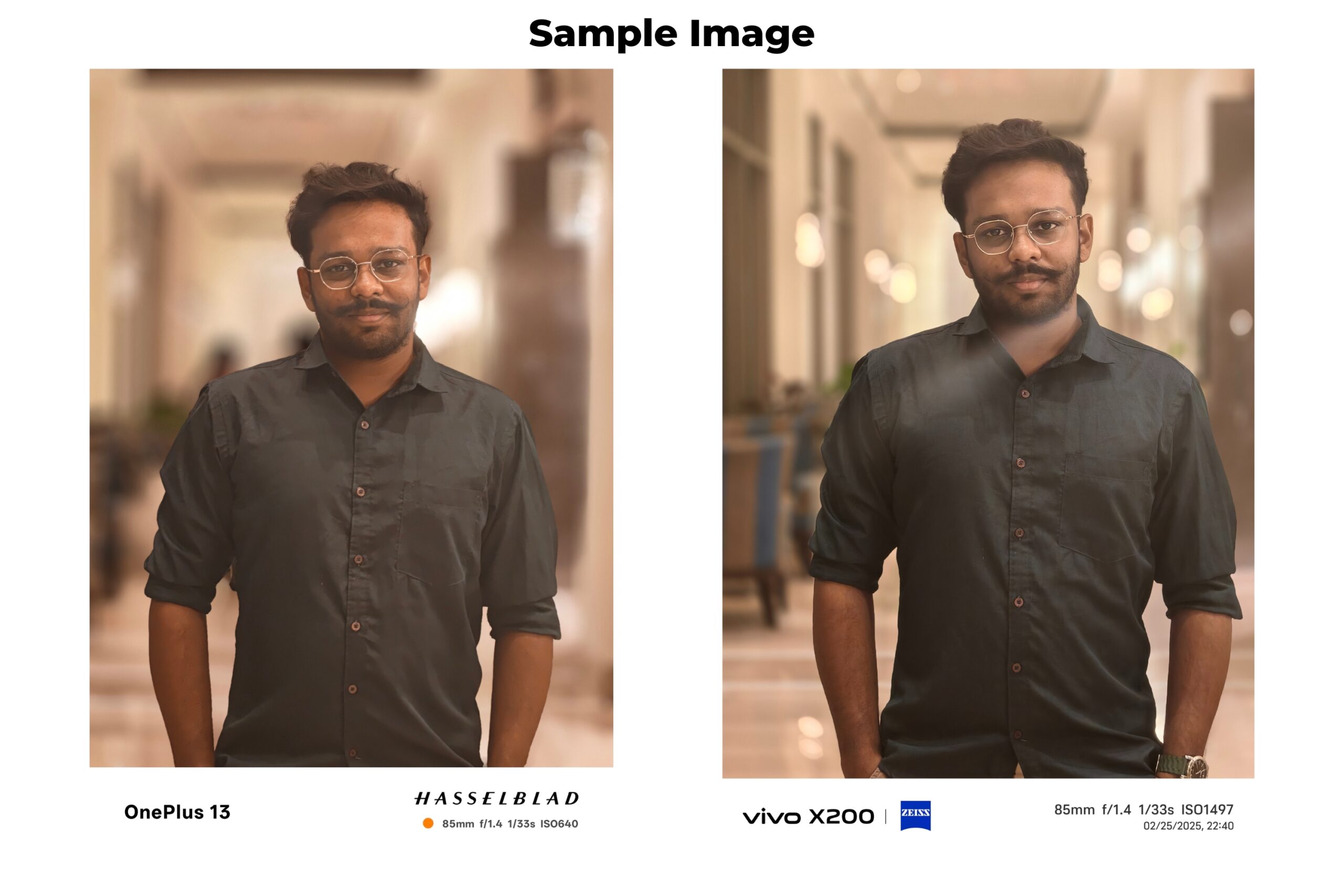
In lowlight as well the performance is good and in a studio environment – both the phones perform really well. The bokeh performance is better on the Vivo in this case, but due to the skin smoothening in some cases the images do look slightly cooked. In this case there is very little to choose between them.
Video Performance
Both phones support 4K 60fps recording with fast autofocus, and the OnePlus even shoots 8K30. Vivo’s footage has higher contrast, while OnePlus delivers more saturated colours in low light, making it look more visually appealing.
Verdict
Both phones have their strengths. Vivo X200 offers better low-light performance, stronger telephoto zoom and more consistent colour reproduction in telephoto. While OnePlus 13 delivers sharper main camera images, better contrast, no skin smoothening in portraits, and an overall more fluid user experience, especially with its new processor and display.
While the Vivo X200 is a good camera phone, as a complete package, the OnePlus 13 is simply better. Its overall user experience, display quality and software refinements make it the superior choice, especially after recent updates that addressed previous concerns that I had.
Watch our review video:










